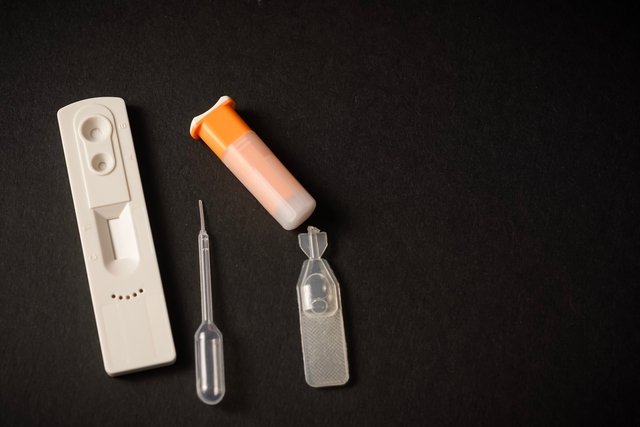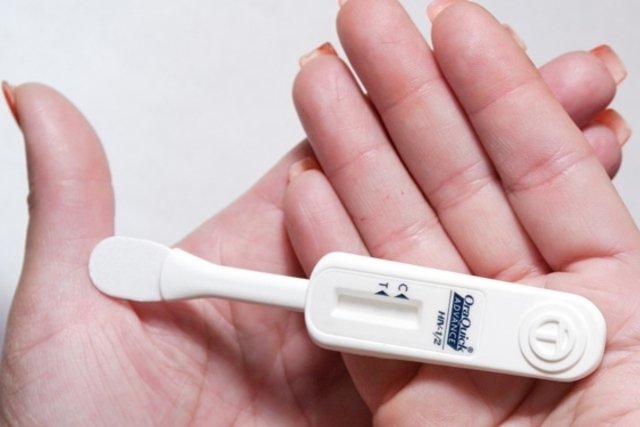The rapid test for HIV aims to inform within 30 minutes whether the person is a carrier of the HIV virus or not based on the identification of antibodies against the HIV virus. This test can be done using either saliva or a small blood sample, and can be done free of charge at the SUS Testing and Counseling Centers.
In the public network, the test is carried out in confidence, under the supervision of a trained health professional and the result is only given to the person who carried out the test. If the test is positive, the person is referred directly to counseling, where they will have information about the virus infection, disease and the treatment that should be started.
The test can be done by anyone who has an active sexual life, but it is most recommended for people who are at risk, such as sex workers, homeless people, prisoners and injecting drug users. See more about the ways in which HIV is transmitted.

How is done
Rapid tests for HIV identify the presence of the virus in the body through the detection of circulating antibodies against this infectious agent, the main tests being:
1. Do saliva tests
The saliva test for HIV is done with a special swab that comes in the kit and which must be passed across the gums and cheek in order to collect the greatest amount of liquid and cells from the oral cavity. It must then be placed in a tube containing reagent so that the result can be observed within 30 minutes. The result is considered positive when two lines are identified on the kit device.
To carry out this test, it is important to have been without eating, drinking, smoking or brushing your teeth for at least 30 minutes, in addition to removing your lipstick before taking the test.
2. Blood test
The blood test is the most used and is done by collecting a small sample of blood, which is normally taken from the tip of the finger. The blood is then placed into the test device, where it comes into contact with the reagent. In up to 30 minutes it is possible to check the test result using the lines that appear on the device. The result is considered negative when a line is seen on the device and positive when two pink or red lines appear, regardless of the intensity of the lines.
When to take the rapid HIV test
It is recommended that the rapid HIV test be carried out after 30 days of risk behavior, such as unprotected sexual intercourse or injectable drug use, as tests carried out before this period may give erroneous results, as the body needs a certain amount of time to produce sufficient amounts of antibodies against the virus for it to be detected in the test, this period being known as the HIV immunological window. Learn more about the immunological window.
In case of positive results, it is necessary to carry out a laboratory test to confirm the presence of the HIV virus and its quantity, which is essential to start treatment. In addition, the person is monitored by a team made up of a doctor, psychologist and social worker to ensure they feel well and have quality of life.
What to do if the result is positive
If the result is positive in either of the two types of test, it is important that the doctor is consulted so that a more specific test can be carried out to confirm the infection and to find out the amount of virus circulating in the body, which is important so that the best treatment is indicated. Find out how the test is carried out to confirm HIV.
If HIV infection is confirmed, it is important to get guidance from your doctor about the virus and the disease, as well as what you should do to maintain your health and avoid transmission to other people.
People who engaged in risky behavior and took the test but had a negative result should repeat the test after 30 and 60 days to be sure of the result, because in some cases there may be a false negative result.
Learn more about HIV and AIDS by watching the following video:
Bibliography
- MINISTRY OF HEALTH. Technical Manual for the Diagnosis of HIV Infection. 2013. Available at: <https://bvsms.saude.gov.br/bvs/publicacoes/manual_tecnico_diagnostico_infeccao_hiv.pdf>. Accessed on October 20, 2021
- MINISTRY OF HEALTH. Rapid HIV test: find out the result in 30 minutes. Available at: <http://www.aids.gov.br/pt-br/noticias/teste-rapido-de-hiv-saiba-o-resultado-em-30-minutos>. Accessed on October 20, 2021

Sign up for our newsletter and stay up to date with exclusive news
that can transform your routine!
Warning: Undefined array key "title" in /home/storelat/public_html/wp-content/plugins/link-whisper-premium/templates/frontend/related-posts.php on line 12
Warning: Undefined array key "title_tag" in /home/storelat/public_html/wp-content/plugins/link-whisper-premium/templates/frontend/related-posts.php on line 13





